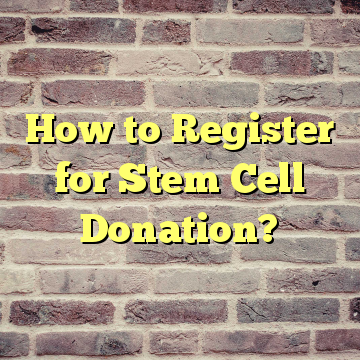A bone marrow transplant is a medical treatment to replace bone marrow with healthy cells. The replacement cells either come from your own body or from a donor. A bone marrow transplant is also known as the name stem cells transplant or a hematopoietic stem cell transplant. Transportation is ideal to treat certain cancer types that affect healthy cells. The bone marrow transplant procedure is from either the donor’s or your body. It is good to treat certain cancer types like myeloma, lymphoma, and other types of the immune system and blood diseases affecting the bone marrow.
Pretransplant Procedures and Tests
Various tests and procedures assess general health and your condition. These procedures and tests also make sure that you’re physically prepared for a transplant. The evaluation can take several days or more.
Additionally, the thin long tube (catheter, intravenous) is implanted into a large vein in your neck or chest. The catheter, often known as the central line, is typically in place for the treatment duration. The transplant team uses a central line to infuse transplanted stem cells, blood products, and medications into the body.
Collection of Stem Cells for Autologous Transplant
If the bone marrow transplant procedure involves the use of stem cells (autologous transplant), you’ll also undergo a procedure called aphaeresis to collect blood stem cells.
Before aphaeresis, you’ll get injections of growth factor daily to increase stem cell production and move stem cells into your circulating blood so it becomes easy to collect.
In aphaeresis, doctors take the blood from a vein and circulate it with a machine. The machine separates the blood into different parts, including stem cells. These stem cells are collected and frozen for future use in transplants. The remaining blood can be returned to the body.
Stem Cells for Allogeneic Transplant
If you’re having a bone marrow transplant procedure from a donor (allogenic transplant) you’ll want a donor. After you’ve got a donor, stem cells are gathered from the person for the transplant. Stem cells are available from the blood of the donor or the bone marrow. The transplant team should know the ones better for you depending on the situation.
Another process allogeneic transplant uses stem cells from umbilical cords (cord blood transplant). Mothers can either donate their umbilical cords after the birth of their babies. The blood from such cords is stored and frozen in a cord blood bank until it is for bone marrow transplant.
Conditioning for Less-intensity
Depending on the health history and age, you can get low doses or various radiation or chemotherapy for a conditioning treatment. It is known as reduced intensity conditioning.
It kills cancer cells and also suppresses the immune system. The donor’s cells are then infused into the body. Donor cells also replace the cells in bone marrow over time. Immune factors in donor cells can then fight the cancer cells.
Risks
The bone marrow transplant procedure can bear many risks for patients. Some people go through minimal problems with bone marrow transplants while others get serious complications that need hospitalization and treatment. Sometimes these complications can become life-threatening.
The risks can be based on various factors, including the condition of the disease resulting in hospitalization or treatment. Sometimes such complications are life-threatening.
The risks are based on many factors, like the condition or disease that resulted in the transplant; the transplant type, age, and overall health. Some complications possible from bone marrow transplant are:
• Organ damage
• Stem cell (graft) failure
• Infections
• Cataracts
• Infertility
• New cancers
• Organ damage
• Death
The health care provider explains the complications of a bone marrow transplant. Together it is possible to weigh the benefits and risks to know whether a bone marrow transplant will suit you or not.
Summary
A bone marrow transplant donor has the potential to cure some diseases and puts others into a state of remission. The goals of bone marrow transplant are based on the condition but typically it includes curing or controlling the disease extending the life and improving life quality.
Some people have few complications and side effects from bone marrow transplants, while others can get long-term and short-term complications. It is good to predict side effects severity and transplant success.
The good news is there are people with transplants who have also gone through tough days during the process of transplant. However ultimately, they’ve had successful transplants and later returned to their normal activities and eventually a good quality of life.
Contact Us:
Phone: (800) 962-7769
